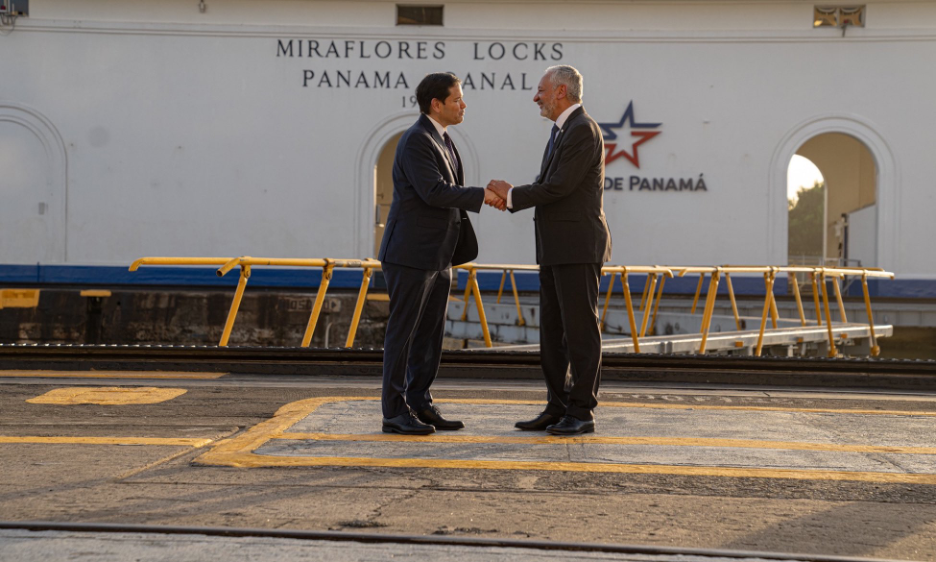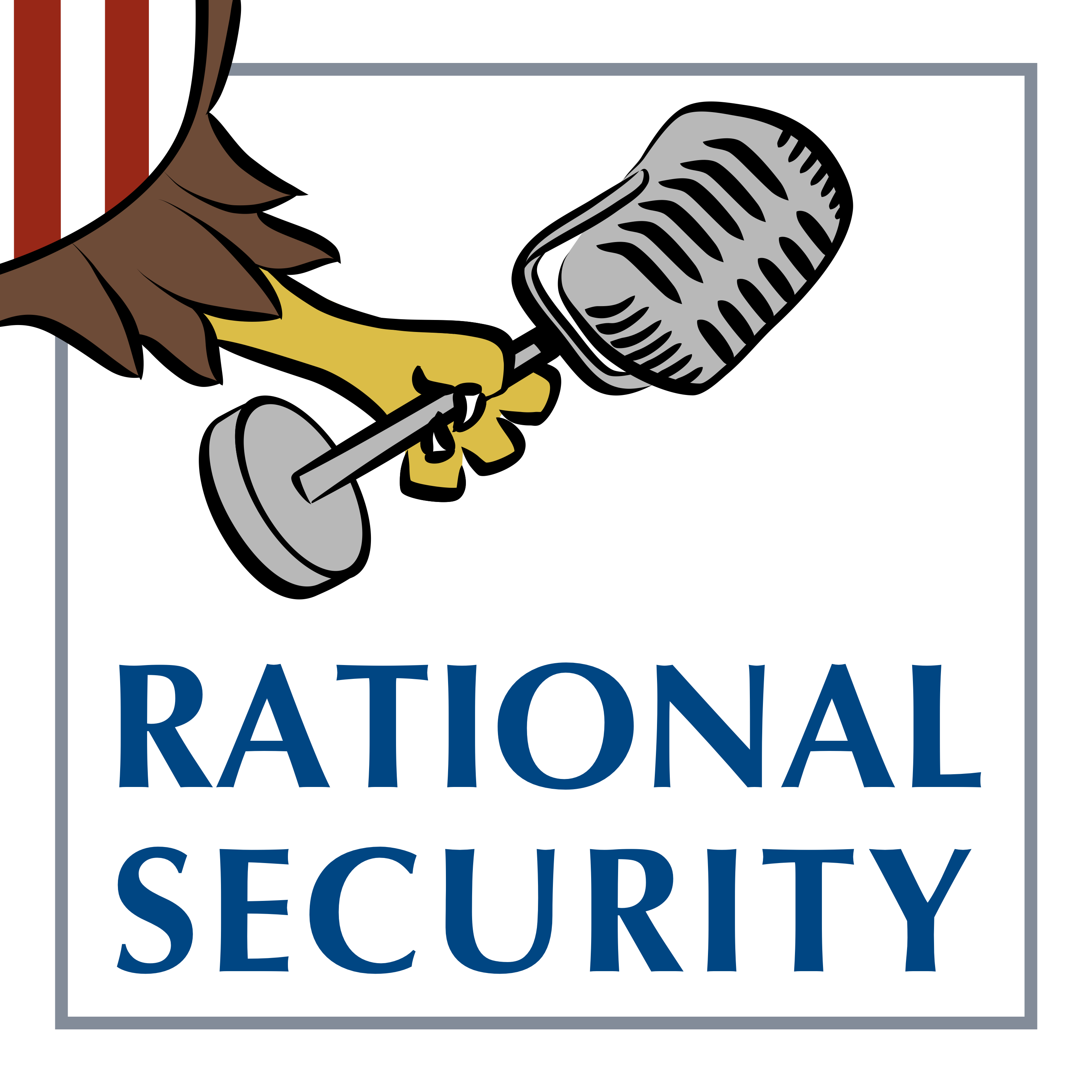Water Wars: Trump, Taiwan, and the Philippines
Quad meeting, Panama problems, undersea cable damage, spying in Taiwan, South China Sea confrontations, and more.

Published by The Lawfare Institute
in Cooperation With

New year, new U.S. president, same problems. The first month of 2025 saw continued tumult in the Indo-Pacific on new fronts—such as President Trump’s threat to “take back” the Panama Canal—and old—including confrontation in the South China Sea and Taiwan. As much as the new administration may seek to revise the Biden administration’s Indo-Pacific strategic posture (which, regardless, may not represent the sea change some expect), it will thus quickly encounter the same strategic constraints faced by its predecessor.
Early Days of the Trump Administration
In January, President Trump’s return to the Oval Office married continuity in hawkishness toward China with erratic and sometimes seemingly unintentional policy shifts angering close partners.
Subtle Shifts in Quad Signaling
On Jan. 21, new Secretary of State Marco Rubio met with the Quad foreign ministers (Australia, India, and Japan) in Washington, D.C., marking the administration’s first major diplomatic engagement. The group published a brief joint statement reaffirming the Quad’s commitment to a “Free and Open Indo-Pacific” and emphasizing the importance of “the rule of law, democratic values, sovereignty, and territorial integrity.” As Euan Graham of the Australian Strategic Policy Institute observed, the statement marked two notable shifts:
First, it highlighted the importance of “security in all domains” in the Indo-Pacific. The Quad countries have historically denied being a security grouping, and although this joint statement does not expressly change that position, its explicit use of the word “security” comes close.
Second, the statement dropped the “unwavering support for ASEAN’s [the Association of Southeast Asian Nations’s] centrality” traditionally featured in Quad releases. That omission uncomfortably echoed Secretary of Defense Pete Hegseth’s failure to name an ASEAN country during his Senate confirmation process (he instead named Australia, Japan, and South Korea).
The Biden administration had already re-elevated the Quad, so the incoming Trump administration’s prioritization of the grouping itself does not represent a strategic shift.
The Quad is positioned to continue serving as a counterbalance to China in the region. Secretary Rubio has a record of being hawkish toward China, with a particular focus on China’s human rights record. However, his principled opposition to engaging with China may put him at odds with President Trump and other close advisers, who may seek to make “deals” with China or even have personal stakes in normalizing engagement.
North Korea’s Nuclear Status: Diplomatic Blunder or Calculated Pivot?
Both President Trump and Secretary Hegseth described North Korea as a “nuclear power” last month, a phrase U.S. officials have assiduously avoided until now to avoid signaling acceptance of North Korea’s status as a nuclear-armed nation. Trump used the language during an offhand comment while signing unrelated executive orders—he also noted that he “got along very well” with North Korean leader Kim Jong Un. Hegseth’s mention, meanwhile, was buried in his written responses to questions from the Senate as part of his nomination process. In an email to Voice of America, White House National Security Council spokesperson Brian Hughes noted that President Trump was still committed to denuclearization.
The Nuclear Non-Proliferation Treaty, to which the United States is a party, defines a “nuclear-weapon State” to include only China, France, Russia, the United Kingdom, and the United States. South Korea’s foreign ministry cited the treaty in its swift rebuke to Hegseth’s statement, saying that “North Korea’s denuclearization has been a principle consistently upheld by South Korea, the United States and the international community.”
As a result of that awkward rollout, analysts disagreed on the meaning or import of the statements. International studies professor Leif-Eric Easley of Ewha Womans University in Seoul told NBC News that President Trump is “not a leader for legal nuances or diplomatic sensitivities.” Meanwhile, the Center for Strategic and International Studies’s Ankit Panda portrayed the comment as potentially part of a broader shift in which the United States focuses on nuclear deterrence rather than denuclearization.
Secretary Rubio Declares Ultimatum in Panama
While the incoming administration’s spontaneous remarks raised alarm bells in Seoul, Secretary Rubio’s visit to Panama in early February started giving shape to President Trump’s sudden late-December threat to retake the Panama Canal. Rubio told Panamanian President Raúl Mulino that the United States would “take measures necessary” if Panama did not address what Trump considers Chinese control over the canal. There is no public evidence that China “controls” the canal’s operations, though a Hong Kong-based company operates two of the five ports adjacent to the canal. Mulino told Rubio that Panama’s sovereignty over the canal was not up for discussion but agreed not to renew and potentially to end early a development agreement with China. Regardless, Trump reiterated his vow to “take back” the canal even after Mulino’s pledge.
Following Trump’s claim, some policymakers have sought to explain the legal basis for the move as an enforcement of the 1977 Treaty Concerning the Permanent Neutrality and Operation of the Panama Canal. Through that treaty and the concurrent Panama Canal Treaty, the United States agreed to cede the canal to Panama in exchange for Panama’s agreement to operate the canal neutrally. Eugene Kontorovich of the Heritage Foundation and George Mason University’s Antonin Scalia Law School suggested that the terms of that neutrality may be violated if the canal were operated even by private firms, if de facto controlled by China. Carla Martinez Machain of the University at Buffalo disagreed on factual grounds, telling DW that neutrality has not been violated: “Any ship from any country wishing to transit the canal has the right to do so after paying a fee.”
Strategically, the Panama Canal is most consequential for U.S. economic security. More than 40 percent of U.S. container traffic ($270 billion annually) transits the canal. But some observers—including Rep. Raja Krishnamoorthi (D-Ill.) and then-commander of the United States Southern Command Gen. Laura Richardson—have also speculated that Chinese control of the canal could threaten U.S. deployments to the Pacific in the case of a conflict.
Taiwan in the Gray Zone
Cutting Cables
On Jan. 6, Taiwan’s coast guard reported that authorities were investigating a Hong Kong-owned cargo ship they suspected of damaging a subsea telecommunications cable. The coast guard initially learned of the damage from the cable’s owner, Chunghwa Telecom, a Taiwanese telecommunications company, which was able to divert internet traffic from the broken line to keep customers on the island connected. The company had also observed a cargo vessel traveling along the same route as the cable. The coast guard intercepted the vessel near the northern city of Keelung, where six other cables connect to the island. The vessel, which sails under the Cameroon and Tanzania flags, is owned by a Hong Kong company and manned by seven Chinese nationals. Upon inspection, the Taiwanese coast guard learned that the vessel was sailing with two sets of automatic identification system signals. Taiwanese authorities asked South Korea for assistance in the investigation into the ship, which was expected to travel to the South Korean port of Busan. According to Taiwan’s coast guard, while examination of the ship’s “historical trajectory” could shed light on its true intentions, “the possibility of a Chinese-flag of convenience ship engaging in grey-zone harassment cannot be ruled out.”
Then on Jan. 22, Taiwan’s Ministry of Digital Affairs announced that the two undersea cables connecting Taiwan’s Matsu Islands to the rest of Taiwan were cut. The islands are situated just 10 nautical miles off China’s coast and were the site of a similar incident in February 2023, when two Chinese merchant vessels cut the same two cables. The cables run from the islands to the rest of Taiwan. Having learned from the prior incident, Taiwan had set up microwave and satellite backup systems, which meant that the islands’ approximate 12,000 residents were mostly unaffected by the severance. According to Taiwanese Deputy Digital Minister Herming Chiueh, no “suspicious” ships were detected around the cables at the time connection was severed and the most likely cause was “natural deterioration,” though cases of ships damaging Taiwan’s sea cables have been on the rise in recent years. He added that, since the start of the new year, Taiwan had reported four cases of malfunctions in sea cables, compared with three in 2024 and 2023. The Matsu cables have also been damaged, though not severed, by Chinese-owned vessels and sand dredgers several times. The Atlantic Council’s Elisabeth Braw described the islands as being “on the front line of Taipei and Beijing’s long-standing faceoff.”
Cyberworld Threats
On Jan. 4, Taiwan’s National Security Bureau (NSB) released its assessment of Chinese cyberattacks in 2024. The report details changes in both the frequency of the attacks and the methods employed. According to the report, Chinese cyberattacks against Taiwan’s government agencies and private sector increased by more than 20 percent from 2023 to 2024, with attacks on government agency accounts increasing the most. The report also found that Taiwan’s Government Service Network experienced a daily average of 2.4 million cyberattacks in 2024, doubling the daily average in 2023. Additionally, the report revealed that Chinese cyber actors used an array of tactics to attack Taiwan’s cyber networks, including exploiting vulnerabilities of email systems, using social engineering, and attempting to steal confidential information.
NSB’s report highlights China’s use of military-civil fusion techniques, whereby the country’s cyber force partners with private actors to launch ransomware and other cybercrime attacks on Taiwan’s manufacturers and entities, including academic institutes. China has successfully combined cyberattacks with real-world military exercises “to intensify the harassment effect and military intimidation.” This includes distributed denial-of-service attacks that are designed to disrupt access to web pages of Taiwanese transportation and financial institutions. Beijing has also used its adeptness in the cyber realm to steal patented Taiwanese technologies.
I Spy a Spy
On Jan. 11, the NSB issued another report on reviewing Chinese espionage activities targeting Taiwan in 2024. The report details quite a busy year for Beijing. According to the report, prosecutions of Chinese espionage have increased significantly in recent years. In 2024 and 2023, the island prosecuted 64 and 48 Chinese spies, respectively. In 2022, that number was five—and in 2021, it was three. The number excluded cases brought under the Anti-Infiltration Act, which regulated foreign hostile influence on Taiwan’s political processes, including elections and referendums.
In terms of targets, current and retired Taiwanese military personnel are of particular concern—accounting for around half of the alleged spies prosecuted in 2024. The report identified five primary channels of infiltration: gang groups, underground banks, front companies, temples and religious groups, and local associations. It also highlighted four main infiltration tactics: using retired service members to recruit active ones, establishing networks through the internet, leveraging financial incentives, and exploiting debts. The main goals of Chinese espionage in 2024 were to steal secret intelligence, develop organizations, establish co-optee networks, and intervene in elections. The report also highlights Taiwan’s dismantling of a China espionage network involving 23 individuals (including eight active military personnel) in 2024. The ring was reportedly collecting information about Taiwanese military bases.
Banning DeepSeek
Given the NSB’s findings, it perhaps comes as no surprise that Taiwan moved to ban public-sector workers and employees of key infrastructure facilities from using AI systems developed by DeepSeek, a Chinese AI startup, on Jan. 31. According to Taiwan’s Ministry of Digital Affairs, the products “endanger[] national information security.” It also said that the DeepSeek AI service “involves cross-border transmission, and information leakage and other information security concerns.” The ban applies to employees of central and local government agencies, public schools, state-owned enterprises, and other semi-official organizations. It also applies to individuals working on critical infrastructure projects and in government-endowed foundations. The ministry did not elaborate on specifics or enforcement measures.
New Year, Same Drill(s)
On Jan. 2, Taiwan’s Ministry of National Defense reported that Chinese warplanes and warships carried out their first “combat patrol” of 2025 around the island. The report came a day after Taiwanese President Lai Ching-te reiterated his administration’s willingness to engage in talks with Beijing and resume regular exchanges. This patrol was followed a few days later by a joint combat patrol conducted by the Chinese air force and navy, which included Chinese J-16 fighter jets and KJ-500 airborne early warning aircraft. Similar patrols were conducted on Jan. 14 and 22.
This blistering start to the new year follows an eventful December, when China launched a major new military drill after President Lai made his first overseas trip to the Marshall Islands, Palau, and Tuvalu, with two stopovers in the United States. The drills were not given a formal name, which fueled speculation that China may be trying to keep the criteria it uses to decide when to launch drills ambiguous. A senior Taiwanese security ministry official reportedly said that there were nearly 90 navy and coast guard ships near Taiwan, southern Japan, and in the East and South China Seas during the drills on Dec. 9. Beijing remained silent for several days after the drills. When China finally did comment on Dec. 13, it made clear that it would “not be soft in its fight against independence and for reunification” and that the timing and location of its military exercises were for it to decide.
Philippines Persists in South China Sea Disputes
“The Monster” in Luzon
The Philippines’s coast guard has been “actively challenging” Chinese coast guard ships off the coast of the Philippine province Zambales for exactly one month now. Zambales province is located on the island of Luzon, in the northern end of the country. Multiple heavily armed Chinese coast guard ships have maintained a presence well within 200 nautical miles of the Philippines coast and thereby, according to the United Nations Convention on the Law of the Sea, within the Philippines’s exclusive economic zone (EEZ). One of China’s main ships in the area is China Coast Guard 5901 (CCG-5901), which—due to its 12,000 tons and 540-foot length from bow to stern—is nicknamed “the Monster.” According to a post by Philippine Coast Guard spokesperson Jay Tarriela on X, Manila’s BRP Teresa Magbanua was able to successfully push back CCG-5901 from 54 to 120 nautical miles from shore. Chinese ships with the numbers 3301 and 3104 were also reportedly spotted around 34 nautical miles off the coast of Luzon on the morning of Feb. 1. According to another post by Tarriela, the Philippines dispatched patrol vessels in response in order to “reinforce the Philippine government’s position against the normalization of illegal patrols by the People’s Republic of China within the Philippine exclusive economic zone.” Compared to Beijing’s larger fleet, Manila’s coast guard maintains 13 oceangoing patrol assets that it received from Japan and France through developmental assistance loans.
On X, Ray Powell, the director of the Stanford-affiliated maritime analysis group SeaLight, noted that China’s 3104 and 3301 continued their “brazen intrusive patrol” and that coming within 25 nautical miles of the Luzon coastline demonstrated China’s “commitment to its 10-dash-line claim over the entire #SouthChinaSea.” Meanwhile, Hu Bo, director of Peking University’s Center for Maritime Strategy Studies and the South China Sea Strategic Situation Probing Initiative Think Tank, cautioned that “with China’s current strength and capabilities in the South China Sea, as long as there is firm determination and will, other claimants like the Philippines are unlikely to succeed in on-site infringements and provocations even with external support.”
PLA Holds Readiness Patrols
On Jan. 31, China’s People’s Liberation Army (PLA) carried out combat readiness patrols in both the waters and airspace near the disputed Scarborough Shoal in the South China Sea. According to the PLA’s South Theater Command, Beijing has been strengthening its maritime and airspace control in the area around the shoal, aimed at “resolutely safeguarding China’s national sovereignty and security” and “maintaining peace and stability in the South China Sea.” The Philippines also claims what it calls the Panatag Shoal, which lies within its EEZ. A social media account affiliated with China’s state broadcaster CCTV said that China’s control over airspace in the South China Sea was becoming “more systematized,” adding that fighter jets and airdrops by transport carriers remain essential in improving China’s strength in the disputed waters. In response to the patrol near the shoal, Philippine President Ferdinand Marcos Jr. said that China should halt its “aggressive and coercive” behavior in what it calls the West Philippine Sea.
Moreover, on Jan. 24, Chinese coast guard ships and a navy helicopter approached a group of Philipinne fishery vessels near Sandy Cay, three uninhabited sandbars in the South China Sea that are adjacent to an artificial Chinese island base and a Philippines-occupied island in the Spratlys. The Philippine boats were conducting a scientific survey in the area, which they were forced to call off after being approached by the Chinese vessels and helicopter. A Chinese coast guard statement said that the Philippine ships had entered Chinese waters without permission and had attempted to land on its Tiexian Reef, and the Philippine coast guard released videos showing Chinese ships approaching official Philippine vessels.
Exchanging U.S. Missiles for Peace?
Also on Jan. 24, Philippine President Marcos offered to remove a U.S. missile system from the Philippines in exchange for China halting aggressive behavior in the South China Sea. The Typhoon mid-range missile system at issue was installed by the U.S. army in April 2023 in order to support joint combat readiness, and China has repeatedly demanded that Manila remove the system. Marcos said that he did not understand the Chinese criticism because China’s missile systems “are a thousand times more powerful than what [they] have.” He told reporters: “Let’s make a deal with China: Stop claiming our territory, stop harassing our fishermen and let them have a living, stop ramming our boats, stop water cannoning our people, stop firing lasers at us and stop your aggressive and coercive behavior, and we’ll return the typhoon missiles.”
While Chinese officials have not commented on Marcos’s remarks, Foreign Ministry spokesperson Mao Ning said recently that the Philippines, by allowing a U.S. missile system in its territory, is “creating tensions and antagonism in the region and inciting geopolitical confrontation and an arms race.”




.jpg?sfvrsn=5a43131e_9)


